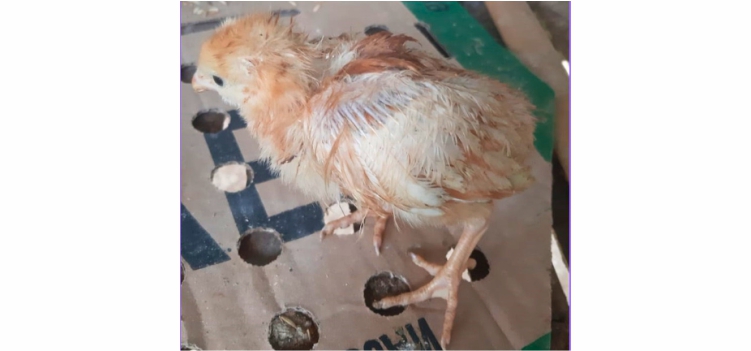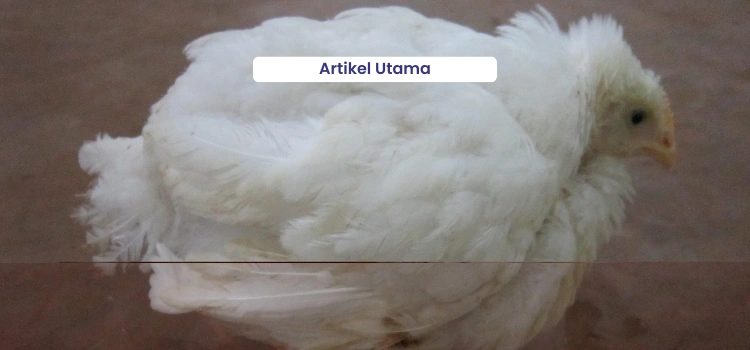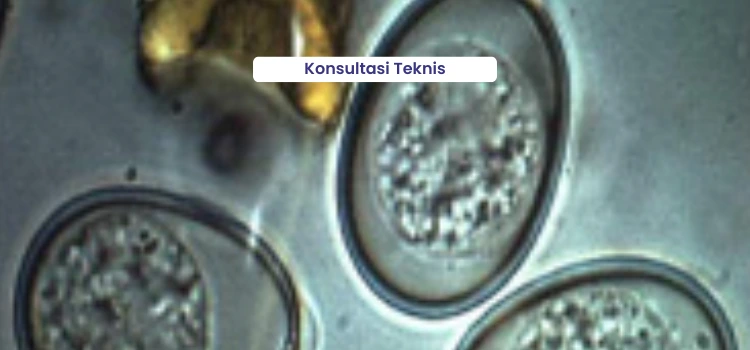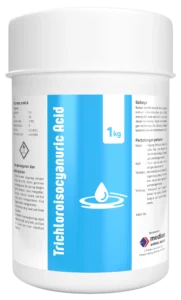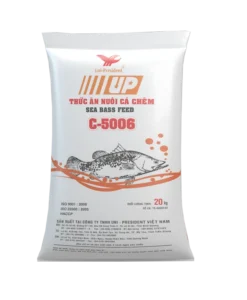Parasitic diseases are one of the serious threats to be faced in commercial chicken farms. This is because although parasitic diseases rarely cause high mortality, they still cause considerable economic losses. In its slow form, it will inhibit the growth of body weight in broilers and a decrease in egg production in laying hens. Here is a description of each parasitic disease that attacks livestock in Indonesia and how to treat it.
Parasitic disease cases in Indonesia
Based on data collected by the team Technical Education and Consultation Medion, parasitic diseases of both endoparasites and ectoparasites are still found annually. The trend of poultry parasitic diseases from previous years in broilers or laying hens is dominated by endoparasites.
In Indonesia, parasitic attacks on chickens can be found throughout the year, with the accumulation of cases more dominant in the rainy season and transition (change of weather) (see Chart 1). In broilers, a frequent case of parasites is coccidiosis due to protozoa Eimeria sp. Meanwhile, cases of ectoparasites and worms in broilers are not very common (graph 2). In laying hens, cases of worms still dominate the most frequent high. Then, there was an increase in cases of ectoparasites (flea infestations) in laying hens from previous years (graph 3).

A variety of parasites that attack chickens
As we know that the types of parasites that attack chickens consist of endoparasites and ectoparasites. Protozoa and worms are endoparasites that often infect chickens. While ectoparasites consist of lice, ticks, mites and fleas. Protozoa themselves cause two cases of infection, namely coccidiosis and leucocytozoonosis, where each case is caused by a different protozoal agent.
Coccidiosis
Coccidiosis disease or commonly known by farmers with bloody stools, is a parasitic disease that the highest incidence of cases on farms and cause considerable impact.
Koksidiosis disebabkan oleh parasit protozoa Eimeria sp. which attacks the digestive tract (intestine and appendix). There are at least 7 species that cause pain in chickens, namely E. tenella, E. necratix, E. acervulina, E. maxima, E. brunetti, E. myth, and E. praecox. Eimeria which attacks the digestive tract, then multiplies and finally damages the epithelial tissue of the intestine.
The damage is further affected by the occurrence of digestive disorders and impaired absorption / absorption of nutrients rations. In the end, the efficiency of the ration will decrease, the growth of chickens is inhibited, the body weight is not uniform, egg production decreases and even death occurs and impaired immune formation or immunosuppressant.
GALT's lymphoid tissue along the digestive tract produces antibodies (IgA), which accumulate in the blood. Damage to the intestinal mucosa will result in the release of plasma and red blood cells so that the levels of IgA, as a defense in the surface layer of the intestine also decreased. So that the formation of antibodies is disrupted and more susceptible to infection with other diseases.
The disease affects the gastrointestinal tract of the small intestine and cecum and more often affects broilers at the age of 2-3 weeks. Various problems that trigger infection Eimeria sp. among them due to non-optimal maintenance procedures. Overcrowded cages and poor sanitation also increase the risk of this disease. If the temperature in the cage is low and the humidity is high or the conditions litter very humid, oocysts that sporulate in the environment can persist for months. Therefore it is very important to maintain quality litter to keep it dry. Transmission of coccidiosis from sick chickens to healthy chickens can occur through rations / drinking water and litter or other equipment contaminated with oocysts.
Signs of coccidiosis chickens will look sleepy, wings drooping down, feathers rough (not shiny), low appetite (anorexia) and diluted feces mixed with blood. Symptoms in the early stages will cause chicken meat and egg production to decrease, while in the acute stage it can cause quite high mortality.
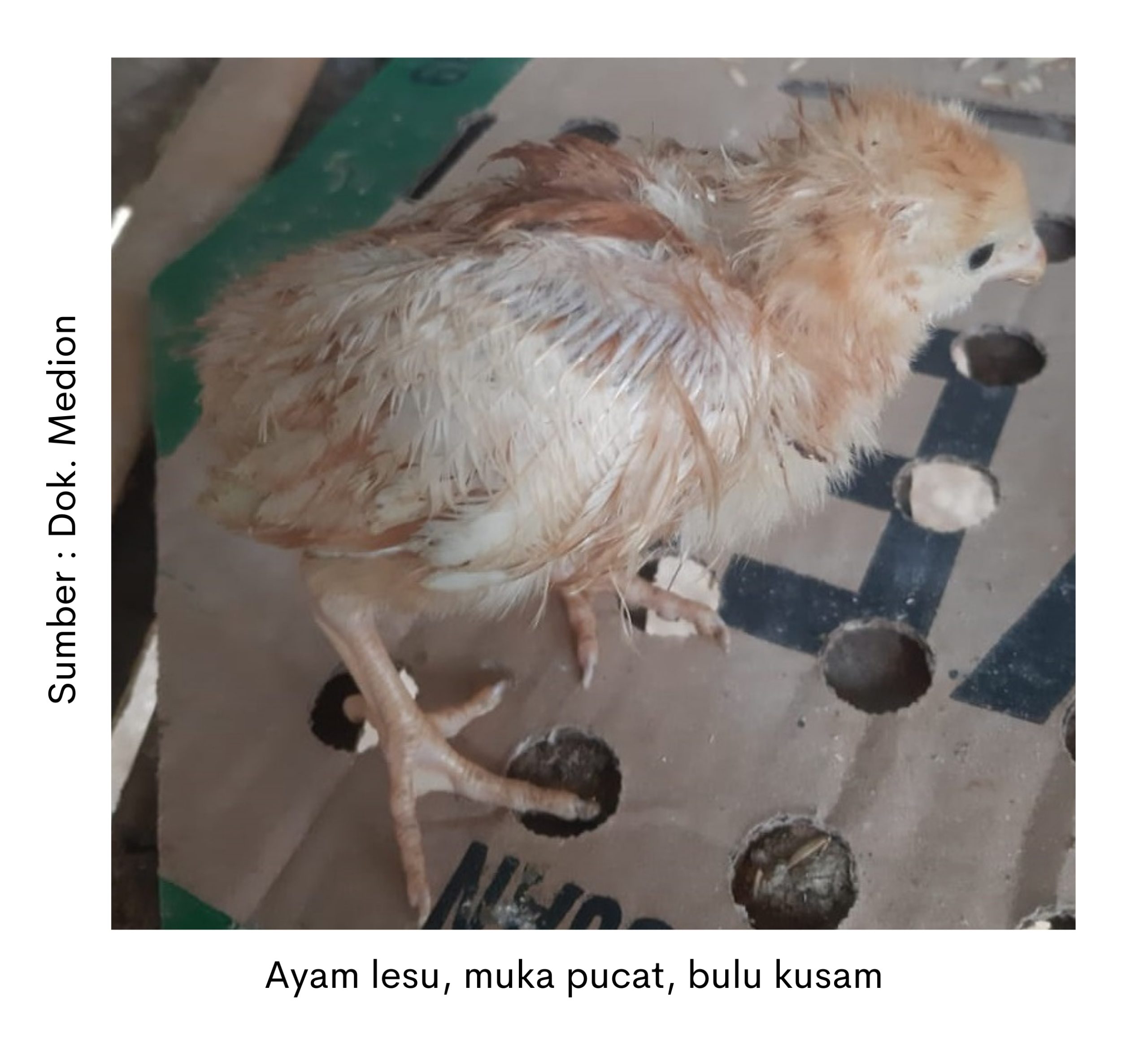
Each species Eimeria having a certain predilection (favorite place, red) in the intestines of chickens, so the wounds caused will also be different. Examples E. tenella the “hobby " occupies the appendix/cecum where the cecum will enlarge filled with blood. Infection E. maxima causes feces to contain thick reddish exudate and mixed with blood spots. While species Eimeria others cause abnormalities in the form of thickening of the intestinal wall accompanied by cataract inflammation (purulent) to hemorrhagic (bloody).

Chickens affected by coccidiosis can be treated by administering drugs such as Toltradex, Koksidex, or Amprosid. To prevent the occurrence of resistance, you should also do rolling administration of coccidiosis drugs. Do not give anticoxidants at the same time as products containing B vitamins or amino acids because B vitamins are nutrients Eimeria sp, so their use will aggravate the infection. Medion has also developed herbal antikoksidia products namely Fithera which can be used as an antibacterial or anti-oxidant.
Malaria/Malaria Like
Cases of malaria in chickens can be caused by two protozoan agents, namely Leucocytozoon sp. (causes of cases malaria-like) and Plasmodium sp. (causes of avian malaria cases).
Malaria like or more appropriately called leucocytozoonosis, adalah penyakit yang disebabkan oleh protozoa Leucocytozoon sp. living in tissues and blood cells. Leucocytozoonosis the Black Eyed Peas (Simulium sp.) and mosquitoes Culicoides sp. Both insects act as vectors and infect healthy chickens through bites.
Where the first sexual development of the parasite occurs in the body of the vector. Furthermore, it is from the bite of this vector that the breeder should be aware because sporozoite bacteria that enter the body of chickens will begin to develop and damage blood cells. Standing water is an ideal medium for breeding mosquitoes and other insects. So do not be surprised if during the transition season or the rainy season, attacks leucocytozoonosis often it appears.

Although cases of this disease are more common in broiler farms, this does not mean that laying hens escape attacks. Clinical symptoms leucocytozoonosis among other things, the appearance of red spots under the skin and muscles and greenish feces.
Chickens look lethargic, shiver with cold and even experience vomiting blood. The mortality rate in chicks is 7-50%, while in adult chickens it is about 2-60%. Examples of drugs that can be used to treat leucocytozoonosis include Maladex, Anticancer, or Erysuprim (choose one and use it according to the rules).

Worm Infestation
Parasitic diseases that are also quite high in incidence on livestock are worms. The difficulty of early detection of cases of worms is allegedly the reason why handling worms is difficult since the beginning of the case.
The types of worms that are quite common in chickens are Ascaridia sp.(cacing gilig), Railietina sp. (tapeworm), and that is spreading recently is a worm Acanthocephala sp..
These worms include Worms commonly found in the small intestine. In detail, a more complete explanation of the new attack of Acanthocephala worms on chickens will also be discussed in this supplement article.
Chickens infected with gilig worms will release worm eggs in large quantities. Condition litter the wet and damp, coupled with the contamination of the ration that is scattered, will allow the worm eggs to develop into infective eggs. Infective eggs are eggs that contain worm larvae.
Unlike the case with convex worms, the life cycle of tapeworms generally passes through intermediate hosts such as insects (flies and beetles), as well as earthworms. Because the role of the host between it is also what makes the tapeworm easy to spread. Eggs that come out with feces will be active in the environment, so they can then be eaten and develop in the body of the intermediate host.
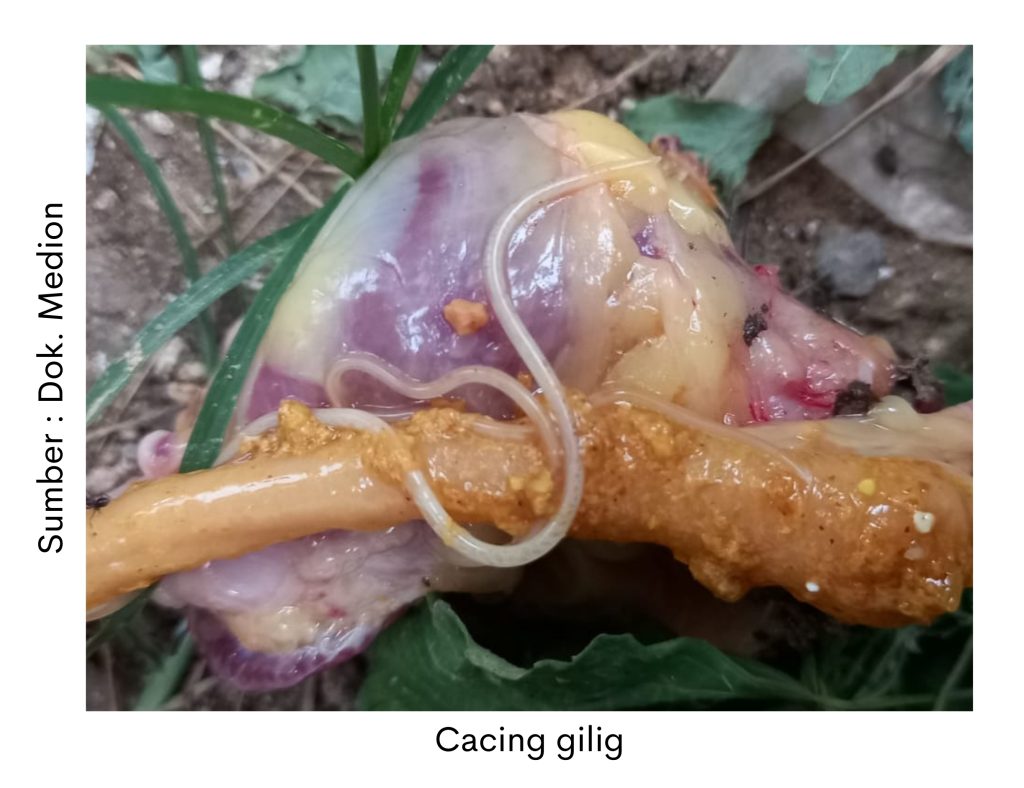
In the field, worms more often affect laying hens than broilers. In addition, young laying hens are also more susceptible to being infected with worms compared to laying hens that have been produced/old.
In the case of worms, new clinical symptoms will be seen if the worm infestation is severe enough. For example, chickens look pale, diarrhea, appetite decreases, egg production decreases, and adult worms are found in feces or in the intestines of chickens.
Taking into account this condition, controlling worms through prevention programs is one wise choice that farmers can take, especially for farmers whose pet chickens are often attacked by worms.
Ectoparasites
External parasites in chickens generally do not cause death but are economically detrimental. External parasites will suck the blood of chickens and cause irritation to interfere with growth and egg production. Very severe head lice (due to infestation by lice, ticks, fleas or mites) can reduce egg production by up to 20%.
Cases of ectoparasites themselves in broilers are rare because chickens are harvested at the age of 5-6 weeks. In contrast, ectoparasites, especially ticks, can be the main enemy for farmers who keep laying hens with poor cage management conditions.

Cases of ectoparasite attacks are relatively easy to recognize by paying attention to some of the symptoms that appear. For example, chickens look restless, constantly scratching, thin, dull feathers, loss of appetite and often Peck feathers and body.
The main treatment to kill ectoparasites such as fleas, ticks, fleas, mites is to use anti-flea drugs. Examples of products that can be used are Kututox or Kututox-S. To Kututox-S spray applied in a closed empty cage and then allowed to stand for 3 hours. For cages that contain, Kututox can be sown in front of wood cracks that are suspected to be flea nests.
Prevention and control
Once we know what parasites commonly infect chickens, the next we must do a prevention and control program. Here are the control measures we can apply:
- Implementation biosecurity the good
- In reducing the seeds of diseases that are around the chicken, first fulfill the management of cage rest which is carried out for at least 2 weeks calculated after the cage is clean and disinfected.
- Pay attention to the conditions around the cage so as not to damp, avoid things that can cause litter wet like spilled drinking water or a leaky cage.
- Perform cage sanitation (using Antisep, Zaldes, Formades or Sporades) and the equipment. Limit the number of guests entering the cage area, prevent wild animals and pets from entering the cage environment etc.Farm equipment (rations, drinking places, etc.) is washed thoroughly. Soak at least 30 minutes in Medisep.
- Perform stool cleansing at least once a week. It is based on the life cycle of flies, which is 7-10 days. Try to clean the stool more often during the rainy season so that the stool is not wet. For mosquitoes, measures can be taken to prevent open puddles such as closing water reservoirs, buckets and so on.
- Do also cutting weeds, burying used items/cans and cleaning sewers. Avoid standing water and clean the bushes that are around the cage.
- Create a cozy atmosphere for chickens. Prevent chickens from stress by paying attention to temperature, humidity, air circulation, ammonia levels and density in the cage, and applying the system all in all out.
- The use of fans in chicken coops can also help suppress insect populations.
- The addition of limestone in and around the enclosure environment. Lime is useful to prevent the occurrence of coccidiosis, which is common in chickens at the age of 3 weeks, because coccidia (the cause of coccidiosis) is not resistant to the heat produced by Lime. Litter it is also necessary to add lime first to the earthen floor, and then stack it with husks. The lime serves to help absorb water so that the litter becomes drier.

- Perform management litter with flip - flops to prevent litter from getting wet. Use supplements that can control ammonia levels in the cage (Ammotrol).
- Exterminate intermediate hosts such as flies by using Delatrin, Larvatox or Flytox. While mosquitoes, beetles, snails, and earthworms can be with special insecticides. Avoid direct contact between insecticides with drinking water, rations or chickens because they are toxic.
- Repeat deworming from the age of 1 month, then repeat regularly every 3 months to completely eradicate worms, ranging from eggs, larvae, to adult worms.
- For ectoparasites, perform regular inspections at least once every 2 weeks on the cage for the presence or absence of ectoparasite infestation.
- Provide a quality ration with complete nutrition every day. Control feeding regularly to ensure chickens get feed as needed. Give also feed additive herbal Optigrin which can be added to the feed to maintain intestinal health.
- Give vitamins to chickens such as Fortevit, Aminovit, Strong n Fit and Vita Stress to increase stamina and body resistance to disease.
Laboratory Examination
Signs of clinical symptoms and results of carcass surgery shown in pure cases of parasites, complications and some cases of other diseases are often similar, so it is necessary to carry out laboratory tests to establish the diagnosis.
With a stable diagnosis, it is possible to correctly determine the treatment program. Laboratory tests can be performed at MediLab (Medion laboratory) spread across several regions in Indonesia. MediLab provides 2 kinds of parasite test, namely:
A. Stool test
Stool test aims to determine the presence or absence of worm eggs qualitatively (the type of worm eggs) and quantitatively (the number of worm eggs per Garm feces). Stool examination should be done regularly, which is once every 2-3 months to detect early-stage worm infestations that often do not show clinical symptoms. Can be done in mild or severe cases by looking at the presence of worm eggs in feces.
B. Blood parasite test
This test is useful to detect the presence of protozoan parasites that cause malaria or leucocytozoonosis it is in the blood of birds. The examination is carried out by taking a blood sample for the presence of sporozoites Leucocytozoon sp. or Plasmodium sp.

Parasites are not just a cause of disease. However, parasites are able to fold the losses that occur on farms so we need to be careful in their prevention. Greetings.

